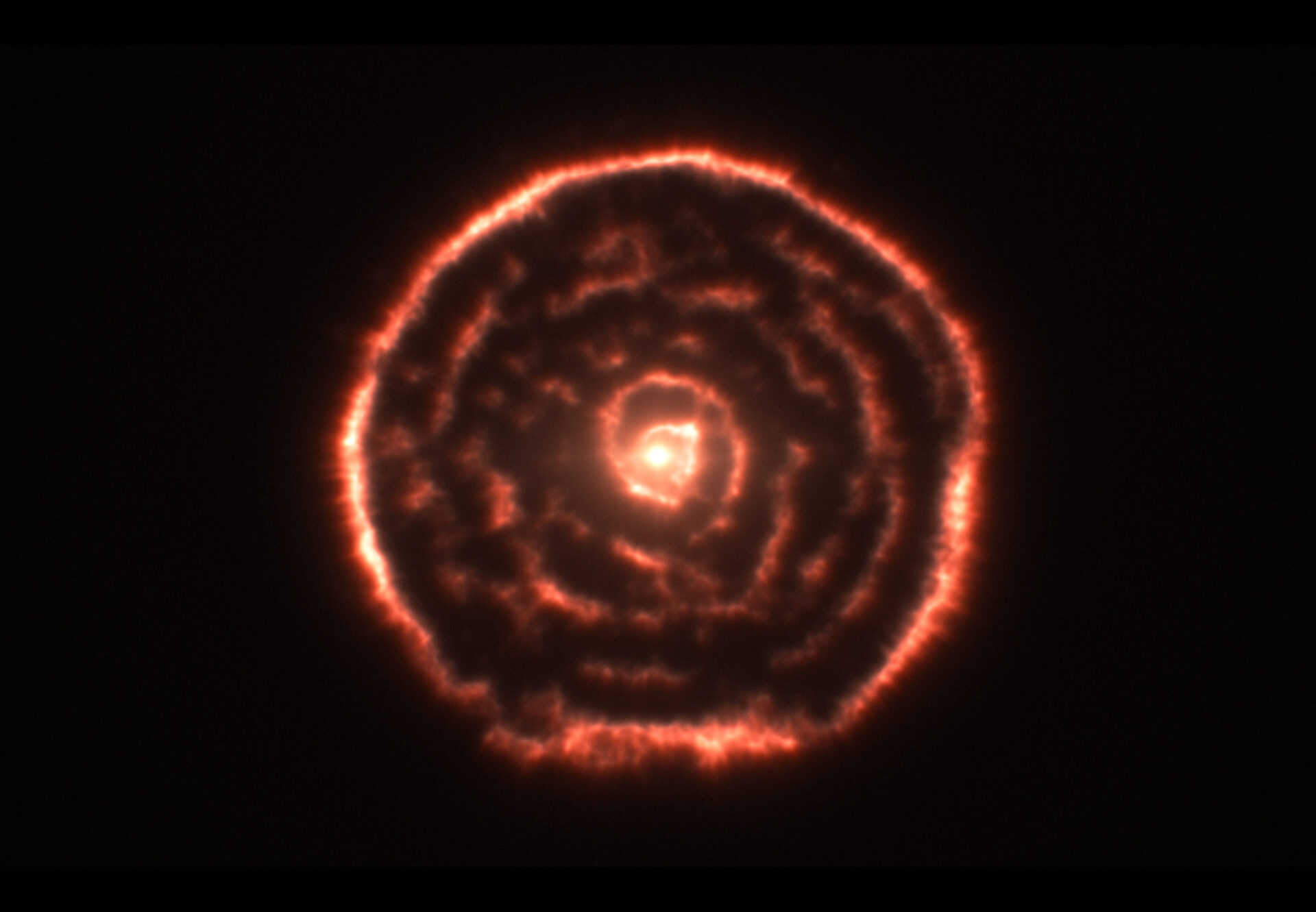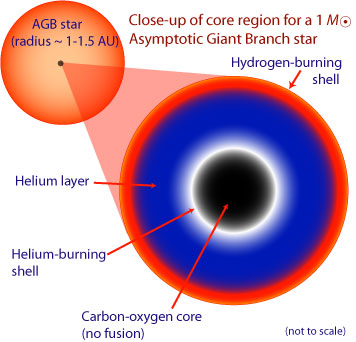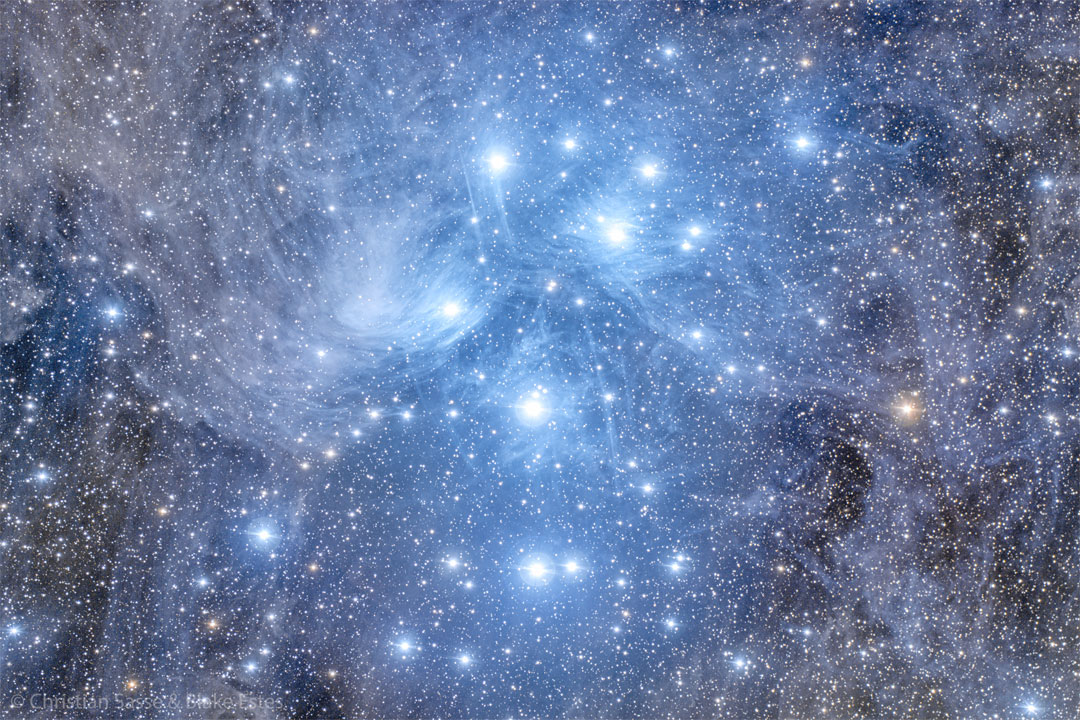Hmm. Cool.
Personally I don't much enjoy seeing the Pleiades in infrared, but indeed, it is interesting to compare the visual and the infrared appearance of this region. The dust and a few cool stars stand out mightily in infrared. The star that stands out the most is SY Tau, which, according to
Simbad, is a long-period variable star.
Wikipedia wrote:
Long period variables are pulsating cool giant, or supergiant, variable stars with periods from around a hundred days, or just a few days for OSARGs, to more than a thousand days...
LPVs have spectral class F and redwards, but most are spectral class M, S or C. Many of the reddest stars in the sky, such as Y CVn, V Aql, and VX Sgr are LPVs.
Most LPVs, including all Mira variables, are
thermally-pulsing asymptotic giant branch stars with luminosities several thousand times the sun.
During their pulsations, long-period variable stars shed a copious amount of mass in several pulses. Consider R Sculptoris:
This is the interior of an asymptotic branch star:
The asymptotic giant branch star has an inert core, but outside the core, it has a helium-burning layer. Further out, it has a hydrogen-burning layer. The way I understand it, the hydrogen-burning turns off when the helium-burning is on, and the helium-burning turns off when the hydrogen-burning is on. The way I understand it, this is what causes the pulsations of AGB stars (or at least it is a contributing reason for the pulsations).
When stars have reached the asymptotic giant branch, the end is near.
Consider the evolution of a 1 solar mass star. After reaching the main sequence and fusing hydrogen to helium in its core, it runs out of hydrogen in its core and becomes a red giant. During the red giant phase, the core is inert and starts shrinking. The continuous shrinking releases very much heat and causes the outer layers of the star to expand mightily. Eventually the core gets hot enough to start fusing helium to carbon and oxygen. The (metal-rich, Sun-like) star has now reached the red clump position in the color-magnitude diagram. If the star had been metal-poor, it would have reached the instability strip to the left on the horizontal branch and become an RR Lyrae variable, and it may even have have moved even further left and become a blue horizontal branch star. But this won't happen, since this is a metal-rich star like the Sun.
After the red clump star has used up its core helium, its core starts shrinking once again, once more heating up the star and again making its outer layers expand. The star is now on the asymptotic giant branch, and the end is near!
[youtube]
https://youtu.be/cJKB7XrMrW4?t=76[/youtube]
Why does long-period variable star Mira sport such a long ultraviolet tail?
It is because Mira is speeding through space while at the same time shedding a lot of mass due to its pulsations. The friction between the interstellar matter and the material shed by Mira heats up the tail and causes it to glow in ultraviolet.
So, anyway. SY Tau, so prominent in the infrared version of the APOD, is a long-period variable. Its Gaia parallax puts it at more than 4,600 light-years away, ten times as far away as the the Seven Sisters. Its infrared K magnitude, i.e., its 2000-2400 nm bandwidth, is so energetic that SY Tau produces 60,000 times as much energy in that bandwidth as the Sun does!
All right, but if we turn our attention to the Pleiades again, they are loveliest when dressed in blue. The APOD from December 5, 2022, is a particularly gorgeous portrait of the interplay between the blue Sisters and the dust cloud they have blundered into, which is reflecting their azure glory. Although I must admit that I have trouble making head or tail of the orientation of this picture!
Ann
 Seven Dusty Sisters
Seven Dusty Sisters




